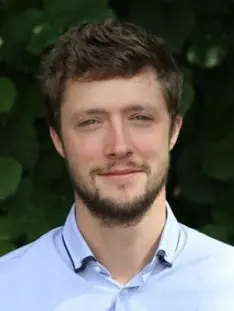A group of University of Wisconsin-Madison researchers has received a $1.8 million grant to develop new materials for multiple uses, including the ability to withstand the corrosive environment within a molten salt nuclear reactor.
 Adrien Couet
Adrien Couet
The group, led by Adrien Couet, an assistant professor of nuclear engineering and engineering physics at UW-Madison, earned the three-year grant from the Advanced Research Project Agency-Energy, a U.S. Department of Energy agency created to identify and fund promising research that has the potential to disrupt or transform energy technology.
Couet says his group’s objective is to develop new metal alloys for use in molten salt technology. For instance, molten salt reactors are nuclear fission reactors that use molten salt as a coolant and as a solvent for uranium fuel. Such reactors were first conceptualized in the 1950s and show promising potential safety and economic advantages over current water-cooled reactors. Still, they pose unique engineering challenges that researchers have been slow to remedy.
One of those challenges is molten salt’s corrosive properties, which require a whole new class of metal alloys that can withstand them. That’s where the UW-Madison team enters. “Right now, the lag in alloy development is one of the reasons why molten salt technologies are not impacting the energy industry in the way they should,” says Couet, who has assembled a team from across the College of Engineering campus with specialties in materials science, additive manufacturing and machine learning to work on the problem.
Their vision is to not only produce a new alloy by the end of the grant, but to also use 3D printers and machine learning to accelerate the process.
“We’re trying to increase the pace of materials development for molten salt technology by two orders of magnitude compared to state-of-the-art technologies,” says Couet. “The approach will be to produce, test and characterize a lot of alloys very, very quickly.”
For the team’s testing ground, Couet describes 3D-printed blocks that will roughly resemble Legos. Each one of the knobs on those blocks will be made from a different alloy, and the researchers will deposit small molten salt droplets on their surface and monitor the alloy performance. Testing how those many alloys stand up to the molten salt will produce huge amounts of data, which is where the analytical muscle of machine learning will step in. In fact, the team aims to produce two innovations: new alloys fit for molten salt applications and a novel method for high-throughput research.
“It’s super-exciting,” Couet says, about landing the grant and the prospective research. “It’s a very high-risk, high-reward type of research. There is a potential to bring a real benefit to industry.”
The ultimate goal, he adds, is to develop energy solutions that can help mitigate manmade greenhouse gas emissions that contribute to global climate change. The College of Engineering is providing a 10-percent cost-share for the research.
Other College of Engineering faculty involved in the research grant include Dan Thoma, a professor of materials science and engineering and director of the college’s Grainger Institute for Engineering; Kumar Sridharan, distinguished research professor in engineering physics; and Dimitris Papailiopoulos, an assistant professor of electrical and computer engineering. The team will also be partnering with researchers at the Argonne National Laboratory, the National Institute of Standards and Technology, and Ametek.